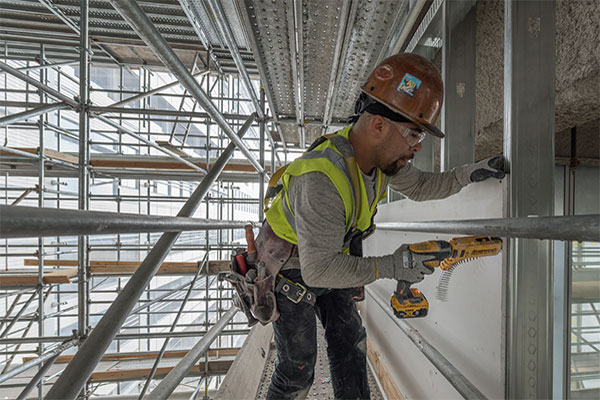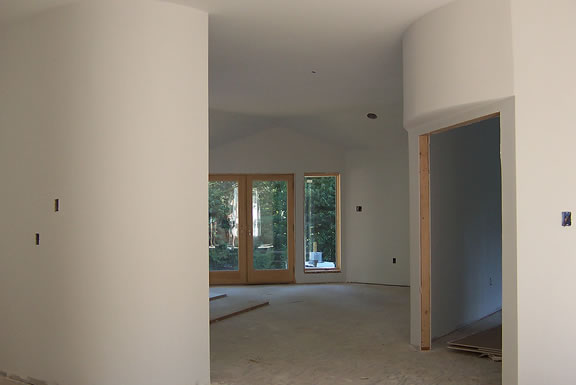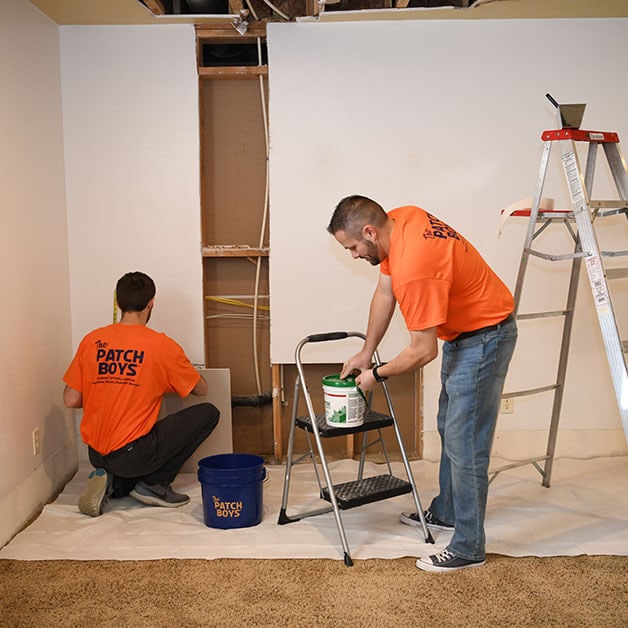Specialist Drywall Contractor Services for Your Home Remodelling
Specialist Drywall Contractor Services for Your Home Remodelling
Blog Article
Complete Guide to Effective and Reliable Drywall Installment
Drywall installment is an essential element of any construction or renovation job, demanding a thorough strategy to make certain both performance and reliability. It is crucial to explore the subtleties of each action in the procedure, as they collectively contribute to the overall success of the drywall installment.
Necessary Tools for Drywalling
When starting a drywall setup task, having the right tools is important for achieving a professional surface. Necessary tools consist of a drywall blade, measuring tape, and a T-square, which are basic for accurate dimensions and smooth cuts. A drywall lift is also very helpful, particularly for ceiling installments, permitting less complicated handling of hefty panels.
For fastening the drywall, a cordless drill and drywall screws are needed. The drill needs to be equipped with a drywall bit to ensure effectiveness and accuracy. Additionally, a vital device is the drywall saw, which facilitates cutting around other barriers and electric outlets.

In addition, safety equipment such as shatterproof glass and a dust mask are important to guarantee personal safety and security during the setup procedure. Utilizing the right devices not just improves the top quality of the setup yet additionally streamlines the workflow, making the project extra efficient general.
Preparing the Area

Following, evaluate the condition of the walls and ceilings. Fix any existing damage, such as holes, splits, or peeling off paint, to guarantee a smooth and also surface area for drywall application. In addition, look for electric outlets, pipes lines, and a/c air ducts, marking their locations to stay clear of issues during installment.
It is also essential to determine the area accurately, identifying the measurements of the walls and ceilings to calculate the proper amount of drywall needed. Develop a thorough strategy that includes the design and positioning of the drywall look what i found panels.
Setup Methods
Effective installation methods are vital for accomplishing an expert coating in drywall projects. Correct check dimension and cutting of drywall sheets are essential actions.
When hanging drywall, begin with the leading and job downward, guaranteeing that the long side of the board is perpendicular to the framing. Safeguard the sheets with screws instead of nails, which supply better holding power and decrease the threat of popping. Location screws every 12 inches along the sides and every 16 inches in the area of the board.
For edges, utilize corner grains to attain sharp, tidy sides. When setting up on ceilings, utilize a drywall lift or have a partner assist in holding the sheets in location (drywall repair). Maintain a void of about 1/4 inch over the floor and ceiling to suit growth and contraction
Finishing Touches

Begin by applying joint tape over the joints. This can be either paper or fiberglass fit together tape, with paper being favored for its durability. When the tape remains in location, it's time informative post to apply the first layer of joint substance, additionally known as mud. Make use of a 10 to 12-inch taping knife to spread the compound equally over the taped seams, feathering the sides to blend with the surrounding drywall.
Allow the substance to completely dry thoroughly, usually 1 day. After drying, sand the surface lightly with fine-grit sandpaper to remove any imperfections. drywall installation. Repeat the mudding and sanding process, normally 2 to 3 coats, ensuring each layer is smooth and flush with the drywall surface
Usual Blunders to Prevent
Many DIY fanatics experience pitfalls throughout drywall setup that can jeopardize the final results. One common error is stopping working to effectively measure and cut drywall sheets.
One more regular mistake is improper fastening. Utilizing also couple of screws or nails can bring about loosened drywall, while overdriving fasteners can cause the paper to tear, deteriorating the structure. It's critical to preserve consistent spacing, typically every 16 inches, and to guarantee that fasteners are flush with the surface area.
Furthermore, not resolving wetness problems prior to installment can lead to mold growth and architectural damages. Always assess the setting and usage moisture-resistant drywall in high-humidity areas.
Conclusion
Reliable and reliable drywall installation calls for meticulous interest to information throughout the process. By making use of essential tools, preparing the area adequately, and adhering to finest techniques in installation methods, a remarkable coating can be achieved. Furthermore, cautious application of joint compound and tape throughout the completing phase enhances toughness and appearance. Preventing usual errors further contributes to an expert result, underscoring the relevance of precision and strategy in effective drywall projects.
It is necessary to discover the nuances of each action in the procedure, as they jointly add to the total success of the drywall setup.When beginning on a drywall installation job, having the right devices is important for attaining a specialist finish.For securing the drywall, a cordless drill and drywall screws are necessary.Correctly preparing the room is important for a successful drywall setup.Efficient installation techniques are vital for achieving a specialist finish in drywall jobs.
Report this page